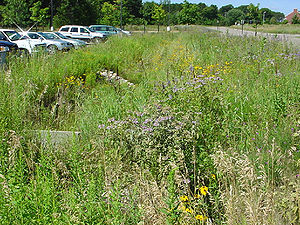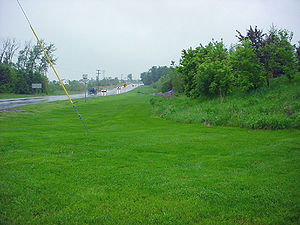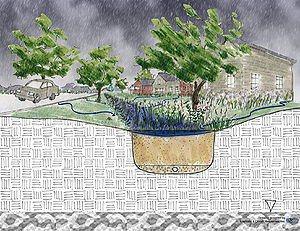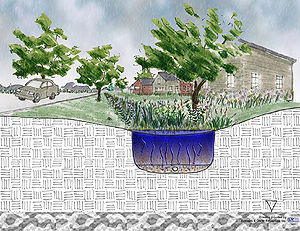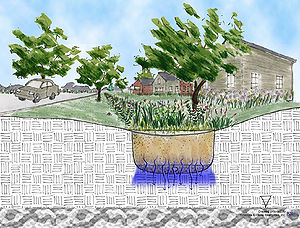
Difference between revisions of "Fact sheet for filtration"
m |
|||
| Line 41: | Line 41: | ||
==Pollutant removal== | ==Pollutant removal== | ||
Pollutant removal varies with the design, construction and maintenance of the BMP. Values below are approximately mid-range removals for a standard designed BMP that is properly constructed and maintained. | Pollutant removal varies with the design, construction and maintenance of the BMP. Values below are approximately mid-range removals for a standard designed BMP that is properly constructed and maintained. | ||
| + | |||
Media filter | Media filter | ||
*85 percent [[Glossary#T|Total Suspended Solids (TSS)]] | *85 percent [[Glossary#T|Total Suspended Solids (TSS)]] | ||
Revision as of 15:52, 14 January 2015
Filtration practices are structural stormwater controls that capture, temporarily store, and route stormwater runoff through a filter bed to improve water quality.
Contents
Design criteria
- Ensure adequate space for Filtration system
- Some installations require 2 to 6 feet of head
- Removal potential of the key pollutant
- Parent material and potential for ground water contamination
Benefits
- Good for highly impervious areas with low sediment/high pollutant load (e.g. urban land use and retrofit scenarios)
- High pollutant removal rates
- May be used in a variety of soil types
- Good for the treatment of hotspots because it can be isolated from groundwater by using a liner if contamination concerns exist
Limitations:
- Higher maintenance requirements
- Some installations (media filters) have higher construction costs
- Minimal treatment of soluble nutrients
- Potential for nitrification in media filters where anaerobic conditions exist
Description
Filtration systems vary in their operation and applicability, but all can be described as structural BMPs that function mainly to enhance water quality by passing stormwater through a media. The media can be made of sand, peat, soil, or compost and should be assigned on a case-by-case basis. Filters can be off-line systems or designed as pre-treatment before discharging to other stormwater features.
media filters can be located on the surface, underground, along the perimeter or an area, or in what is called a pocket design.
Mechanisms
- Infiltration with raised underdrain
- Screening/ Filtration
- Evaporation
- Transpiration if vegetated
- Soil Adsorption
- Biological/ Micro. Uptake
Pollutant removal
Pollutant removal varies with the design, construction and maintenance of the BMP. Values below are approximately mid-range removals for a standard designed BMP that is properly constructed and maintained.
Media filter
- 85 percent Total Suspended Solids (TSS)
- 50 percent/35 percent Nutrients - Total Phosphorus /Total Nitrogen
- 40 to 80 percent Metals - Cadmium, Copper, Lead, and Zinc (will vary with metal)
- 35 percent Coliform, Streptococci, E. Coli
- 80 percent Hydrocarbon
Vegetative filter
- 68 percent Total Suspended Solids (TSS)
- 40 percent/35 percent Nutrients - Total Phosphorus /Total Nitrogen
- 40 to 80 percent Metals - Cadmium, Copper, Lead, and Zinc (will vary with metal)
- 0 percent Coliform, Streptococci, E. Coli
- 80 percent Hydrocarbon
Site factors
- The RECOMMENDED maximum drainage area is typically 5 acres, but can be greater if the discharge to the basin has received adequate pretreatment and the basin is properly designed, constructed, and maintained.
- 20 percent maximum Site Slope
- 3 feet minimum Depth to Bedrock unless lined
- 3 feet minimum Depth to Seasonally High Water Table unless lined
- A,B,C,D - NRCS Soil Type
- Poor to Good Freeze/ Thaw Suitability
- Suitable with impermeable liner - Potential Hotspot Runoff
